Stalk Borer
Ok, I googled stalk borer and found this page...
Stalk Borer
Papaipema nebris (Guenee), Noctuidae, LEPIDOPTERA
-----------------
DESCRIPTION
Adult - The forewings of this moth are basically reddish- or grayish-brown marked with distinct white spots or obscure smoky areas. The outer third is paler and bordered by a thin white line. The hind wings are grayish brown on the upper surface and fawn gray below. The wingspan ranges from 25 to 40 mm in diameter.
Egg - The longitudinally ribbed egg may be spherical or slightly flattened and measures 0.4 to 0.6 mm in diameter. White when first deposited, it gradually turns brownish-gray or amber before hatching.
Larva - Basically brown, the early larval instars have a dark brown band around the middle and brown or purple longitudinal stripes on all but the first four segments. The mature larva is solid white or light purple and may reach a length of 31.8 mm. Color plate.
Pupa - About 16 to 22 mm in length, the light brown pupa gradually darkens as it matures.
-----------------
BIOLOGY
Distribution - The stalk borer occurs in all areas east of the Rocky Mountains from southern Canada to the Gulf of Mexico. Highest populations are associated with fields and fence rows with large-stemmed weeds. Economically significant infestations are most common in the Piedmont, particularly in no-till plantings.
Host Plants - Stalk borers tunnel in almost any large- stemmed plant. Their host range encompasses at least 44 families and 176 species of plants. Some cultivated crops subject to infestation include corn, cotton, potato, tomato, alfalfa, rye, barley, pepper, spinach, beet, and sugarbeet. Although many weedy plants are infested, giant ragweed is preferred.
Damage - Stalk borers migrating from an earlier host infest corn seedlings 6 to 60 cm (2 to 24 inches) high, causing two types of injury. Larvae that enter the plant through the lower stalk tunnel upwards, severing the leaves from below. In this case, infested stalks are hollow and apparently healthy green leaves wilt and die. Other larvae climb plants, enter from the top, and feed on buds and rolled leaves. As they unfurl, the new leaves display ragged holes which increase in size as the leaves display ragged holes which increase in size as the leaves develop. Both forms of injury result in destruction of tassels, production of suckers and deformation of the upper plant. Soon after borers enter the seedlings, the stems often break. Frass is usually evident around the base of more mature infested plants. Once past the "whorl" stage, however, corn is somewhat resistant to the stalk borer and recovers more readily from damage. Damage is sporadic but most commonly associated with the border rows of conventionally planted corn and with no-till plantings.
Life History - Stalk borers overwintering as eggs on weedy plants. In May, the newly emerged larvae feed as leaf-miners on broadleaf plants or as stem borers on grasses. On all hosts, larvae eventually bore into the stem and feed until they kill or outgrow their host. When this occurs, they emerge at night and tunnel into new plants, including seedling corn. Developing through 7 to 16 instars, stalk borers mature in their second host. Late in July, the borers emerge, construct individual cells in the soil, and begin a 4-week pupal period. Stalk borer moths emerge in late summer and deposit eggs singly or in masses between the leaf sheath and stems where they remain until the following spring. One generation occurs each year.
Pics can be seen at the site here.
...
This sounds a lot like what I have... The plants were outside amongst tall weeds in the early summer, chewed leaves, entry holes with brown sawdust like matter, branches dying... That must be it, now I think they have outgrown the plant now, so I wonder where they have gone...
Thanks again to everyone, especially Minus, for pointing me in the right direction!
I'm taking pics now, will post next...
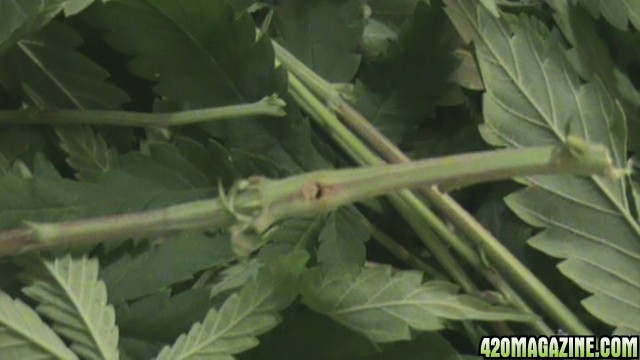
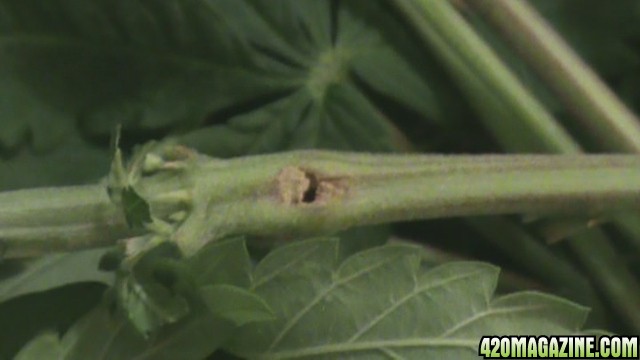
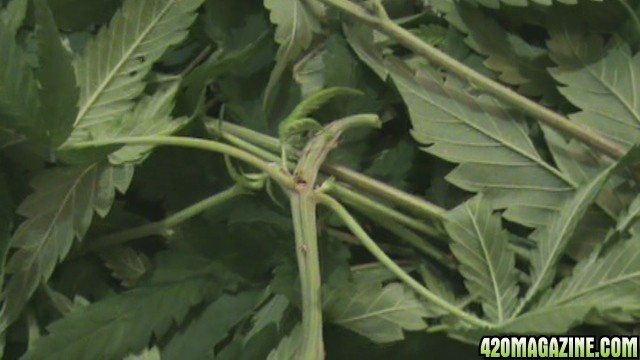
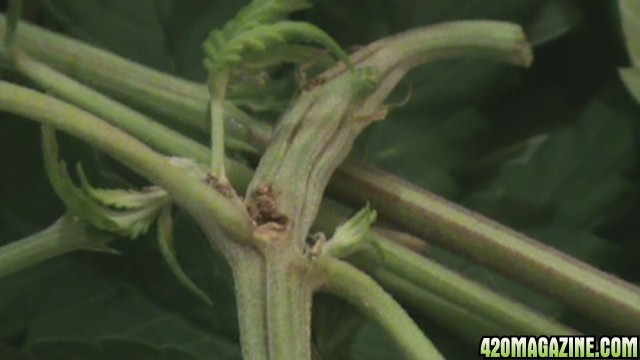
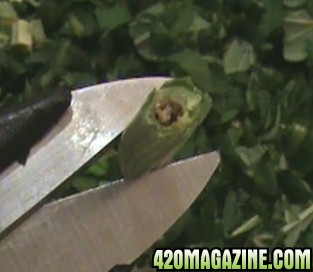
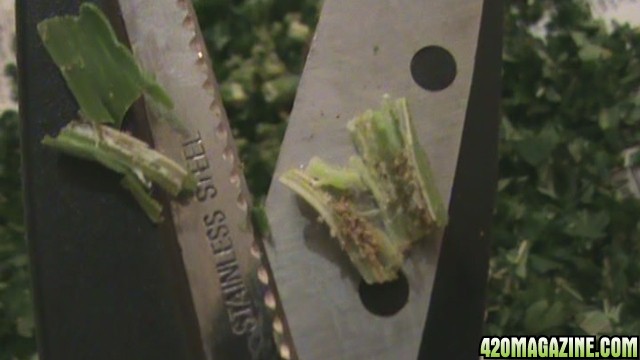







 )
) 